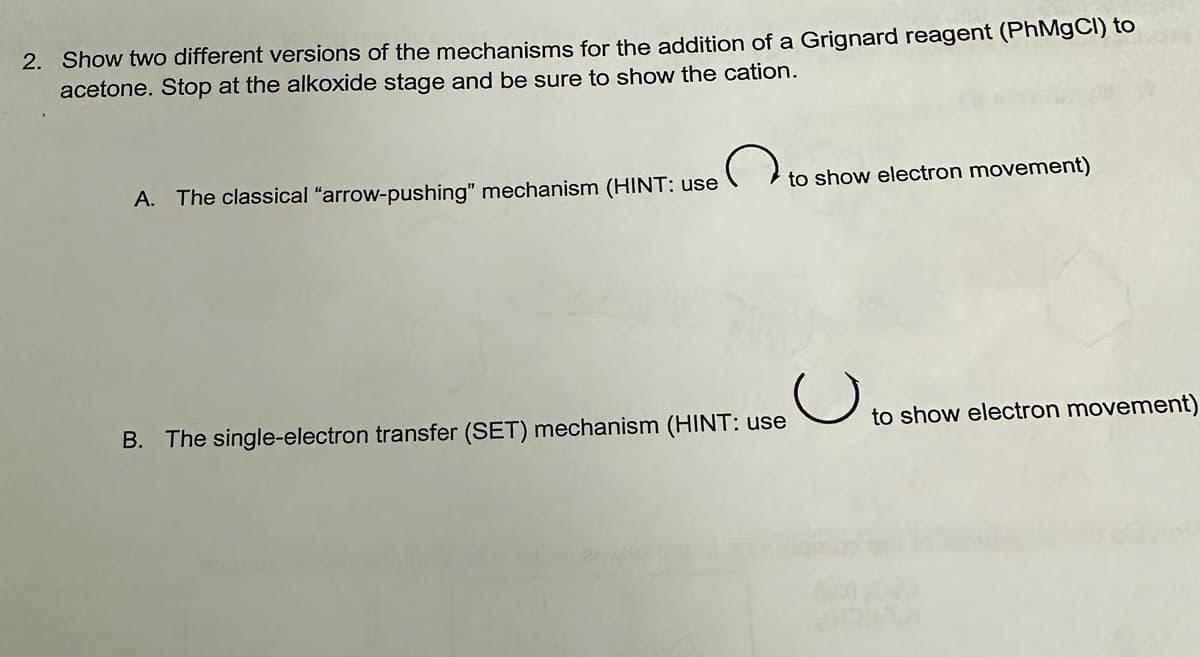Show two different versions of the mechanisms for the addition of a Grignard reagent (PhMgCl) to acetone. Stop at the alkoxide stage and be sure to show the cation. A. The classical "arrow-pushing" mechanism (HINT: use to show electron movement) B. The single-electron transfer (SET) mechanism (HINT: use to show electron movement)
Show two different versions of the mechanisms for the addition of a Grignard reagent (PhMgCl) to acetone. Stop at the alkoxide stage and be sure to show the cation. A. The classical "arrow-pushing" mechanism (HINT: use to show electron movement) B. The single-electron transfer (SET) mechanism (HINT: use to show electron movement)
Organic Chemistry: A Guided Inquiry
2nd Edition
ISBN:9780618974122
Author:Andrei Straumanis
Publisher:Andrei Straumanis
Chapter14: Elimination
Section: Chapter Questions
Problem 24E
Related questions
Question

Transcribed Image Text:2. Show two different versions of the mechanisms for the addition of a Grignard reagent (PhMgCl) to
acetone. Stop at the alkoxide stage and be sure to show the cation.
A. The classical "arrow-pushing" mechanism (HINT: use
B. The single-electron transfer (SET) mechanism (HINT: use
to show electron movement)
U
to show electron movement)
Expert Solution
This question has been solved!
Explore an expertly crafted, step-by-step solution for a thorough understanding of key concepts.
Step by step
Solved in 3 steps with 3 images

Knowledge Booster
Learn more about
Need a deep-dive on the concept behind this application? Look no further. Learn more about this topic, chemistry and related others by exploring similar questions and additional content below.Recommended textbooks for you

Organic Chemistry: A Guided Inquiry
Chemistry
ISBN:
9780618974122
Author:
Andrei Straumanis
Publisher:
Cengage Learning

Organic Chemistry
Chemistry
ISBN:
9781305580350
Author:
William H. Brown, Brent L. Iverson, Eric Anslyn, Christopher S. Foote
Publisher:
Cengage Learning

Organic Chemistry: A Guided Inquiry
Chemistry
ISBN:
9780618974122
Author:
Andrei Straumanis
Publisher:
Cengage Learning

Organic Chemistry
Chemistry
ISBN:
9781305580350
Author:
William H. Brown, Brent L. Iverson, Eric Anslyn, Christopher S. Foote
Publisher:
Cengage Learning